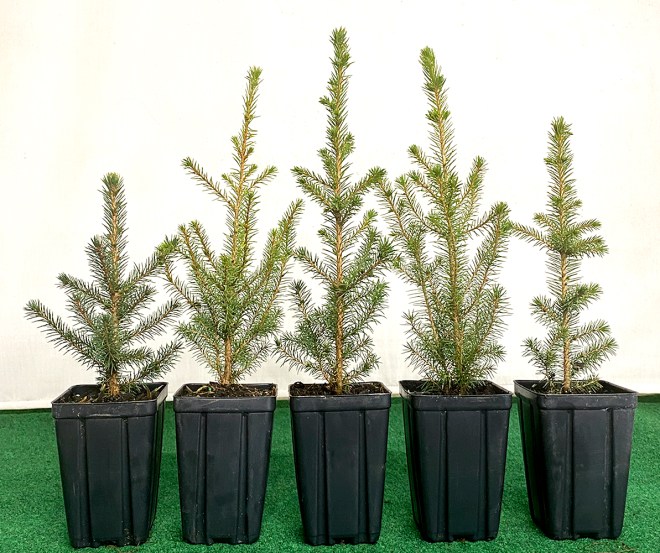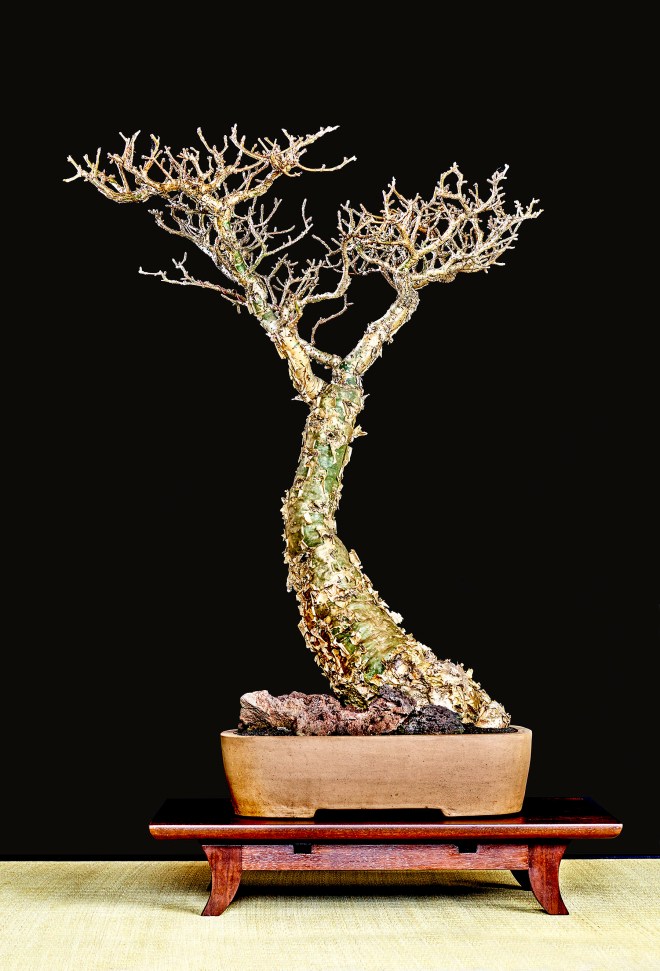

There are six spruce species native to the northern and high mountain regions of Japan. The “Ezo spruce,” Picea glehnii, is the best and most commonly trained spruce for bonsai in Japan. The correct botanical name for this spruce is Red Ezo spruce, Aka Ezo matsu in Japanese, because of the opening reddish new growth. In the bonsai community it is commonly called “Ezo spruce.” Ezo is the old name for Hokkaido. A common name for this species is Sakhalin spruce in the horticultural community.

Another similarly named spruce, the Yeddo spruce, Picea jezoensis, is commonly mistaken for the Ezo spruce, especially outside Japan. The correct name for this spruce is Black Ezo spruce, Kuro Ezo matsu, in Japanese because of the dark bark. This species is NOT trained for bonsai in Japan because of the large coarse needles which are about twice the size of the Red Ezo spruce. I asked Mr. Kato, whose father was a pioneer and collector of Ezo spruce in northern Japan, about the difference between Red and Black Ezo spruce and he told me, we never use Black Ezo spruce because it is too large with coarse foliage. This species is often named Ezo spruce in the horticultural world, however it is not the species trained for bonsai in Japan.

About 50 years ago there was an Ezo spruce boom in Japan and the dwarf cultivars became quite popular, and expensive too. Most originated as bud mutations or witch’s brooms and are grouped together and called “yatsubusa” which means multiple buds and are dwarf in plant character. There are several dozen named dwarf cultivars of Ezo spruce and mostly now used for rock planting style bonsai.

The Ezo spruce offered in my new catalog are vigorous, healthy, two year old container grown seedlings. Potted and established with an excellent root system they are 8-12” tall. Low branches can be used to develop into shohin bonsai. The needles are short, straight and branches full of buds for spring new growth. Young trunks are now flexible and can easily be shaped into stunning bonsai with movement. Ezo spruce are most commonly trained in the forest style for bonsai. Young seedlings allow for trunk placement close together for an interesting design. Limited quantities. Trees are ready for shipping now. US orders only.



Next season we will be offering larger 1 gal. size Ezo spuce. So order these smaller specimens for different trunk diameters if you plan to make a forest bonsai.

Seedlings established in 4” pots, 8-12” tall
1-2 Seedlings $25 each Free Shipping
3 or more Seedlings $20 each Free Shipping


You can easily order on line here:
www.internationalbonsai.com/page/1442817
Be sure to check out the new catalog which also offers 20 different species and cultivars including Red Chojubai Flowering Quince and Twisted Trunk Pomegranates.





























You must be logged in to post a comment.